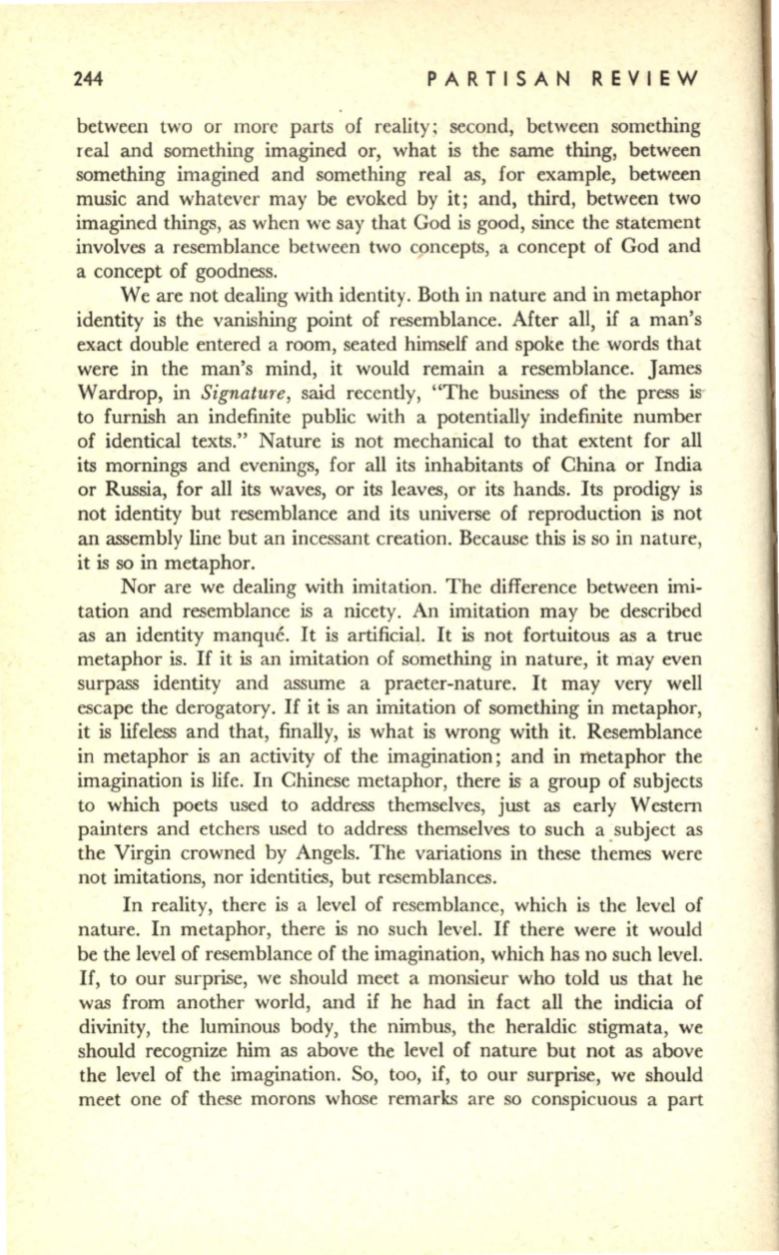
244
PARTISAN REVIEW
between two or more parts of reality; second, between something
real and something imagined or, what is the same thing, between
something imagined and something real as, for example, between
music and whatever may be evoked by it; and, third, between two
imagined things, as when we say that God is good, since the statement
involves a resemblance between two concepts, a concept of God and
a concept of goodness.
We are not dealing with identity. Both in nature and in metaphor
identity is the vanishing point of resemblance. After all, if a man's
exact double entered a room, seated himself and spoke the words that
were in the man's mind, it would remain a resemblance. James
Wardrop, in
Signature,
said recently, "The business of the press is
to furnish an indefinite public with a potentially indefinite number
of identical texts." Nature is not mechanical to that extent for all
its mornings and evenings, for all its inhabitants of China or India
or Russia, for all its waves, or its leaves, or its hands. Its prodigy is
not identity but resemblance and its universe of reproduction is not
an assembly line but an incessant creation. Because this is so in nature,
it is so in metaphor.
Nor are we dealing with imitation. The difference between imi–
tation and resemblance is a nicety. An imitation may be described
as an identity manque. It is artificial. It is not fortuitous as a true
metaphor is.
If
it is an imitation of something in nature, it may even
surpass identity and assume a praeter-nature. It may very well
escape the derogatory.
If
it is an imitation of something in metaphor,
it is lifeless and that, finally, is what is wrong with it. Resemblance
in metaphor is an activity of the imagination; and in metaphor the
imagination is life. In Chinese metaphor, there is a group of subjects
to which poets used to address themselves, just as early Western
painters and etchers used to address themselves to such a .subject as
the Virgin crowned by Angels. The variations in these themes were
not imitations, nor identities, but resemblances.
In reality, there is a level of resemblance, which is the level of
nature. In metaphor, there is no such level.
If
there were it would
be the level of resemblance of the imagination, which has no such level.
If,
to our surprise, we should meet a monsieur who told us that he
was from another world, and if he had in fact all the indicia of
divinity, the luminous body, the nimbus, the heraldic stigmata, we
should recognize him as above the level of nature but not as above
the level of the imagination. So, too, if, to our surprise, we should
meet one of these morons whose remarks are so conspicuous a part


